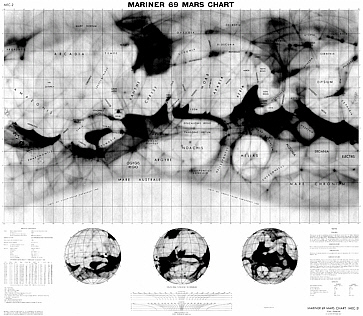13
Conclusions
It is humankind’s nature to explore our surroundings if it can be done. Fifty years ago, exploring Mars was not one of the things anyone could do. Those who were curious had to be content with fuzzy images of the planet, quivering in the oculars of telescopes. But that is far from the case today. Forty years ago, spacecraft began to be sent to the planets, and since then, the art of space exploration has become increasingly refined and discoveries have multiplied. We now have the capability, in principle, of reaching and exploring any object in the solar system. At the top of the list of targets of exploration is Mars, the most Earth-like, most accessible, most hospitable, and most intriguing of the planets. Two years ago, in October 2000, NASA recognized this by setting the study of Mars apart in a structured Mars Exploration Program. The present document reports on COMPLEX’s study of the program.
COMPLEX has compared the elements of the Mars Exploration Program with the research objectives for Mars that have been stressed by advisory panels, including this one, for more than 23 years. The committee found that correspondence between the two is not perfect. Currently, NASA focuses on the search for life, and its prerequisite, water, as the main drivers for Mars research, and has favored missions and experiments that support these goals. The space agency is not now in a position to ask direct questions about life on Mars, and has not been since the Viking mission in the 1970s, but the missions supported are designed to find the areas most promising for water and life, and to investigate in situ their chemical and petrographic potential for extant or fossil life.
Since NASA operates within budget constraints, this emphasis on one particular scientific objective necessarily comes at the expense of others. COMPLEX considered the question of whether NASA’s priorities are too heavily skewed toward life-related investigations. The committee decided, however, that this is not the case. The emphasis on life is well justified; the life-related investigations that are planned range over so much of Mars science that they will result in broad and comprehensive gains in our knowledge; and the areas most neglected as a consequence of this emphasis (see Chapter 12) will, to some extent, be investigated by projected missions of our international partners.
COMPLEX endorses the program NASA has set up, though the committee has also pointed out several areas of high scientific priority that the program does not address. This report stresses the uniquely important role of sample return in a program of Mars research, and urges that sample-return missions be performed as early as possible. Discussions and recommendations related to sample return appear in Chapters 7 and 12. A more general review of the conclusions of this report is contained in the Executive Summary.

FIGURE 13.1 The study of Mars has come very far. This map is a reminder of how the planet was perceived in 1967. SOURCE: Mariner 69 Mars Chart, NASA MEC-2.
Our understanding of the most Earth-like planet beyond our own has increased dramatically in 35 years of spacecraft research (see Figure 13.1). Most of us will live to see an even greater increment of knowledge result from execution of the Mars Exploration Program that this report describes.


